Shimano XTR Di2: First look at the new electronic off-road groupset


Just prior to this year’s Sea Otter Classic, Shimano took the wraps off a completely revised flagship XTR groupset that once again comes in race and trail option. They held back the announcement of one additional option: the Di2 option. By extending their Di2 technology to XTR, Shimano has introduced the first production electronic shift system designed for mountain bikes.
Like the road-going Dura-Ace Di2 group, the electronic XTR (dubbed M9050 Di2) shares drivetrain (cranks, chain, cassette) and brakes with its mechanical counterpart. Electronic shifters, derailleurs and of course a battery are brought in for shifting duty. As such, M9050 Di2 feature Shimano’s Rhythm and Range concept, with the design goal to allow riders to maintain their cadence and have the appropriate gearing, no matter the terrain or their ability level. Simply put, Shimano wants to ensure that riders have the appropriate gearing (range) to maintain their preferred cadence (rhythm) while tackling the terrain of their choice.

The new XTR goes from 10 to 11 speed in the back, spanning 11- to 40-tooth cogs. For the first time, Shimano offers a single ring 1x drive setup in the front, in addition to the traditional two (2x) and three (3x) chain rings in the front. The new rings are made with aluminum, titanium and carbon to optimize weight and durability. The dedicated 1x ring has a sophisticated and proprietary tooth profile that Shimano claims eliminates the need for chain retention devices.
For those looking for wider range gearing than 11–40 match to a single ring for wider terrain versatility, Shimano suggest a double or triple setup might be more appropriate, offering more gearing at either extreme than even the widest range cassette while avoiding big jumps between cogs. Shimano says that with the introduction of “synchronized shift” mode, using a double or triple is as simple and intuitive as a single ring setup.
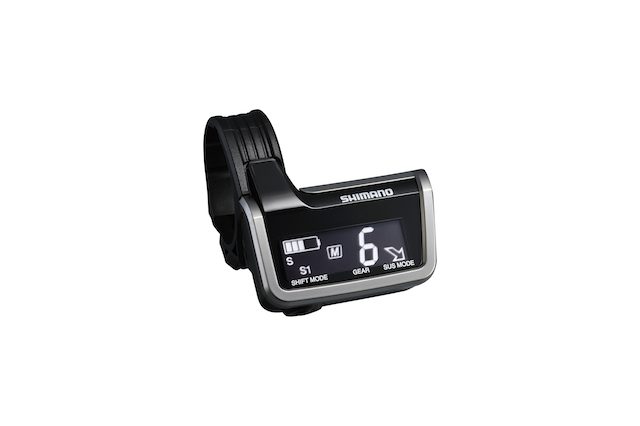
Synchronized Shift Mode
Arguably the most exciting feature of the Shimano XTR Di2 groupset is its synchronized shift, a somewhat complicated concept to explain, but rather simple to use in riding. Similar to Dura-Ace Di2, one can control the front derailleur with the left shifter, and the rear derailleur with the right shifter, or vice versa. Or, the upper shift levers can control front shifts, and the lower shift levers can manage rear shifts. Really any variation you want can be programmed because the XTR Di2 uses the same E-tube wiring and software as Shimano’s road-going groupsets. So far, pretty standard.
However, with XTR Di2, Shimano introduces the idea of synchronized shifts, or the ability to shift sequentially. Let’s say you are climbing up a hill with a mechanical setup, and you’ve shifted to your biggest cog while in the big ring. You are cross chaining. In order to go to a lower gear and continue up the hill, you would need to shift to the smaller ring in the front, but that suddenly puts you in a much lower gear, causing you to hamster wheel wildly with your legs. Or worse, you were too cross eyed to realized you had run out of cogs in the back. You depress the right shifter only to discover no easier gear left in the back, thus stalling out or even falling over.
The logical thing to do would’ve been to shift down two cogs in the back before shifting to the small ring in front, since that is the next sequence in terms of gearing, but that is not always possible, especially when one is on the limit and not thinking clearly.
With the new XTR Di2 in synchronized mode, that ideal shifting pattern is exactly what happens. The electronic brain of the shifters will make the rear shift first, followed nearly simultaneously by the front shift. This is made possible by the powerful servo motors used for the electronically powered derailleurs, which are able to auto trim, as well as shift faster while under much greater load than spring driven mechanical setups.
The new XTR Di2 can be programed with two customizable synchroized shift modes, for climbing and flatter terrain, as well as a traditional manual shift mode that is accessible at any time. The manual mode will override the pre-programmed shifts. All of this activity is controlled via the SC-M9050 display unit, a handle-bar mounted control unit that displays battery level, gearing and shift mode while doubling as a front junction and battery charge port.
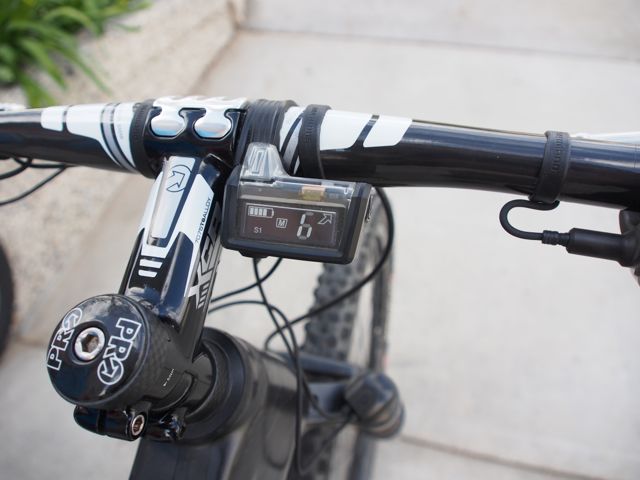
Should you pair the XTR Di2 groupset with Fox’s iCD electronic suspension system, which was developed in conjunction with Shimano, the new XTR will integrate with it and allow control of the suspension’s various damping modes through the SC-M9050 display unit.
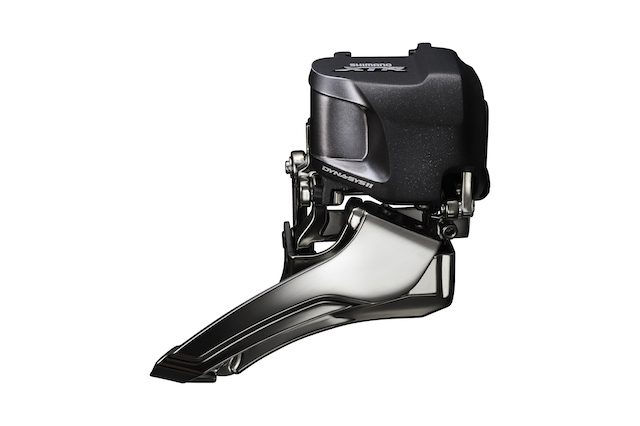
Aside from being electrically powered, the derailleurs share much in common with their mechanical counterparts. Through the use of a series of adapter mounts, the same FD-M9050 Di2 front derailleur is compatible with High clamp, Low clamp, D-type and E-type mounting options, virtually guaranteeing compatibility with any frame configuration. The RD-M9050 features the same Shadow+ mount as on the mechanical version, which keeps the derailleur closer to the frame to lessen the chance of impact. Should impact occur, the RD-M9050 will – like Dura-Ace Di2’s rear derailleur – disengage the servo motor in a self-preservation mode to prevent damage to the expensive and delicate motors. This should, in theory, mean the RD-M9050 is no more prone to crash damage as the mechanical version, although replacement costs will still be far higher in the event of damage.
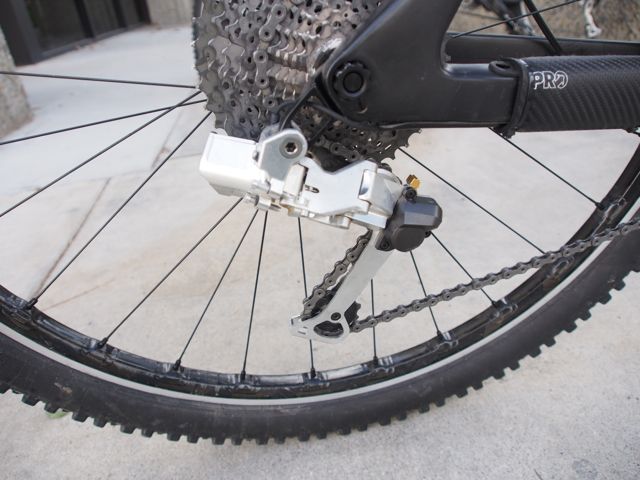
How does it ride?
Before Sea Otter, I had the opportunity to visit Shimano America’s Irvine, Calif., headquarters, to see a pre-production prototype. Having spent extensive time on both generations of Shimano’s Dura-Ace Di2, I was intrigued by the possibility of an off-road version, and how it would differ from its road predecessor.
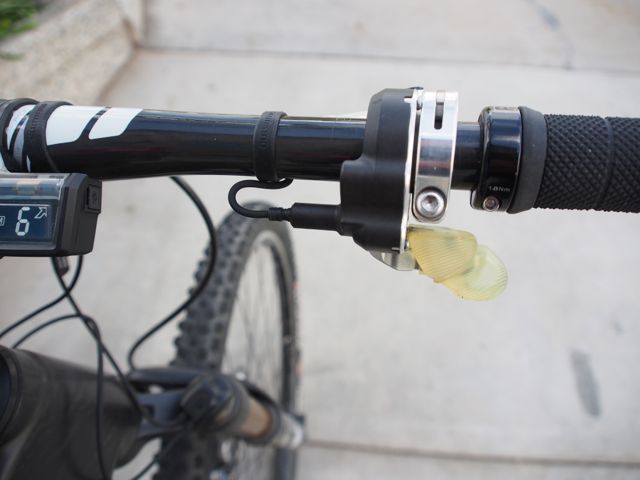
Despite the rough pre-production appearance, and brief 10-minute parking lot test, I was not disappointed. The system fired through the shifts in the smooth, seamless manner that Di2 is known for. But the biggest surprise were the shifters, which look and function like their mechanical brethren. Based on feedback from its MTB test riders, Shimano kept the push levers for the electronic shifters, and made them with crisp, distinct clicks for shifts. As oppose to the flat paddles on its road shifters, which lack feedback beyond the whine of the servo motors doing their jobs. The throws on the prototype are short, and the levers are nicely positioned where your thumbs naturally rest, but otherwise they are as you would expect. I hope this shifter behaviour will be incorporated into the next generation of Shimano’s road-going groupset.
The other standout feature for me is the synchronized shifts. It is one of those things that you would never miss if you’ve not tried it. But once experienced, it just makes so much sense. I wondered why it hadn’t been implemented before now.
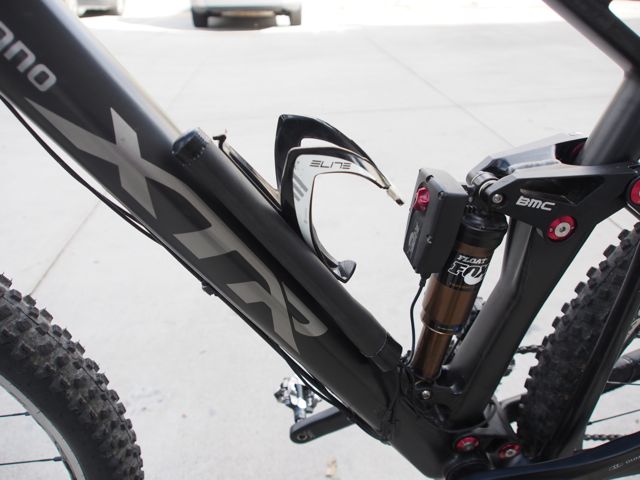
Fall 2014 is the target release date for the groupset, although initial availability will likely be limited. While the price hasn’t been announced yet, it will be high, according to Shimano, similar to difference between Dura-Ace mechanical and Di2. Expect approximately 40 per cent premium for XTR Di2.
Ever since the successful introduction of Shimano’s road-going Dura Ace Di2, speculations have been rampant on when it would be available in an off-road flavour. Shimano’s announcement of XTR Di2 is exciting not just for the level of technology exhibited, which is impressive in its own right, but for its implications. It will be exciting to see features like distinct shift clicks and synchronized shifting migrate over to the road side with the next update of Dura-Ace and Ultegra Di2. The tech is also likely to trickle down to the XT level; although based on Shimano’s previous product cylces, we may have to wait until the next update of the XTR version before that happens.
